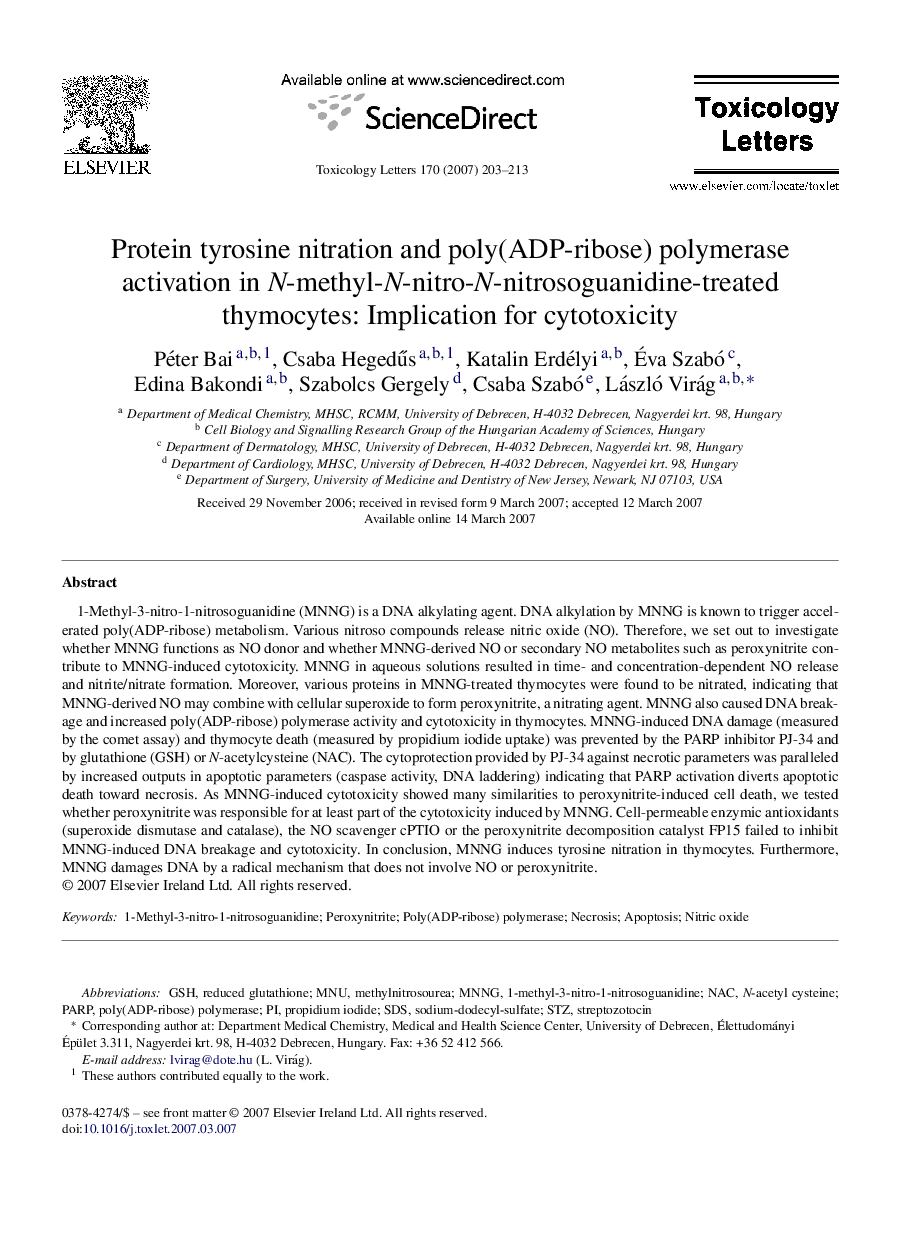| کد مقاله | کد نشریه | سال انتشار | مقاله انگلیسی | نسخه تمام متن |
|---|---|---|---|---|
| 2600806 | 1562651 | 2007 | 11 صفحه PDF | دانلود رایگان |

1-Methyl-3-nitro-1-nitrosoguanidine (MNNG) is a DNA alkylating agent. DNA alkylation by MNNG is known to trigger accelerated poly(ADP-ribose) metabolism. Various nitroso compounds release nitric oxide (NO). Therefore, we set out to investigate whether MNNG functions as NO donor and whether MNNG-derived NO or secondary NO metabolites such as peroxynitrite contribute to MNNG-induced cytotoxicity. MNNG in aqueous solutions resulted in time- and concentration-dependent NO release and nitrite/nitrate formation. Moreover, various proteins in MNNG-treated thymocytes were found to be nitrated, indicating that MNNG-derived NO may combine with cellular superoxide to form peroxynitrite, a nitrating agent. MNNG also caused DNA breakage and increased poly(ADP-ribose) polymerase activity and cytotoxicity in thymocytes. MNNG-induced DNA damage (measured by the comet assay) and thymocyte death (measured by propidium iodide uptake) was prevented by the PARP inhibitor PJ-34 and by glutathione (GSH) or N-acetylcysteine (NAC). The cytoprotection provided by PJ-34 against necrotic parameters was paralleled by increased outputs in apoptotic parameters (caspase activity, DNA laddering) indicating that PARP activation diverts apoptotic death toward necrosis. As MNNG-induced cytotoxicity showed many similarities to peroxynitrite-induced cell death, we tested whether peroxynitrite was responsible for at least part of the cytotoxicity induced by MNNG. Cell-permeable enzymic antioxidants (superoxide dismutase and catalase), the NO scavenger cPTIO or the peroxynitrite decomposition catalyst FP15 failed to inhibit MNNG-induced DNA breakage and cytotoxicity. In conclusion, MNNG induces tyrosine nitration in thymocytes. Furthermore, MNNG damages DNA by a radical mechanism that does not involve NO or peroxynitrite.
Journal: Toxicology Letters - Volume 170, Issue 3, 15 May 2007, Pages 203–213